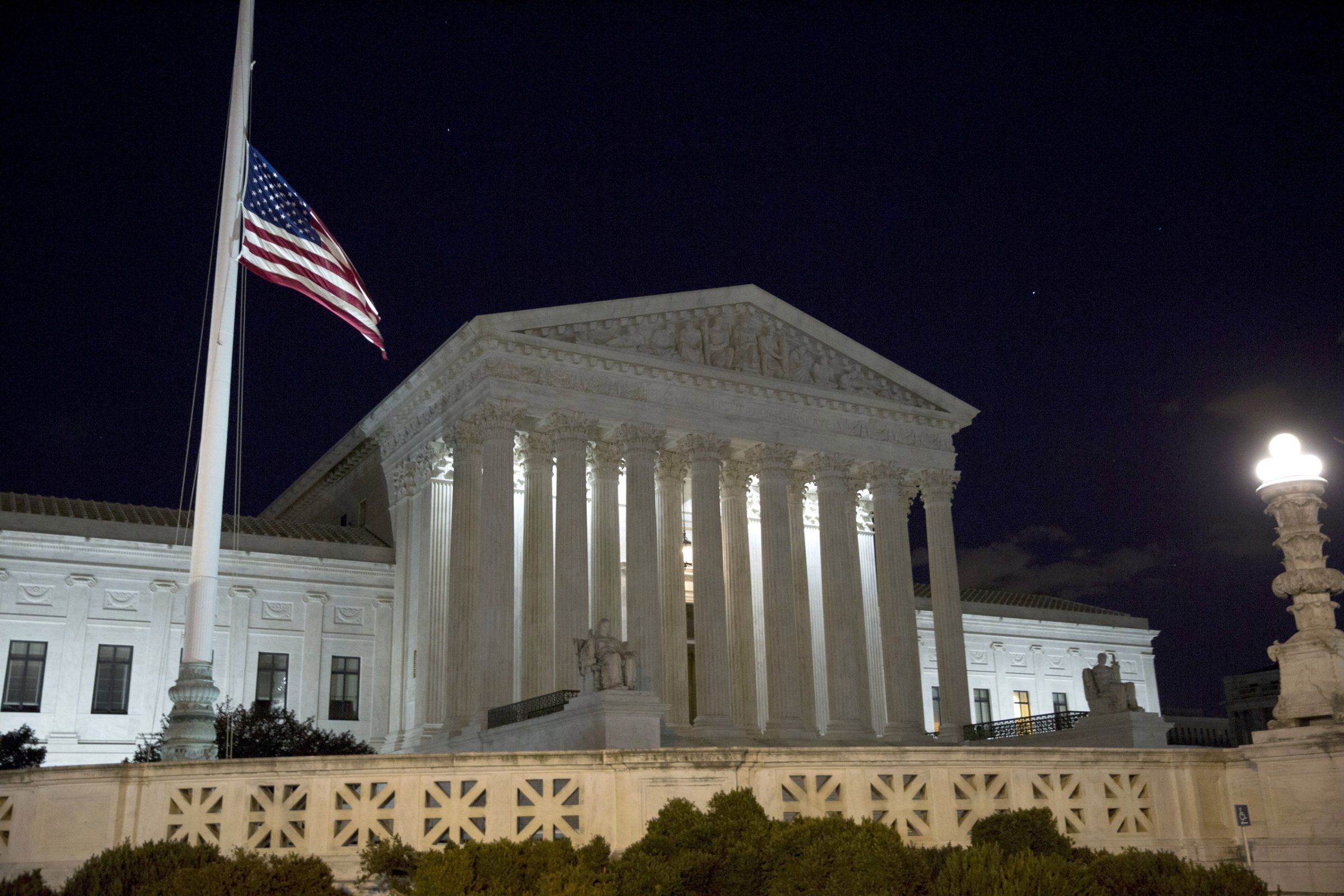
The death of Justice Antonin Scalia at age 79 raises a lot of questions, including how decisions of the U.S. Supreme Court go forward as the process to nominate his successor begins. Without nine justices, there is the potential for a 4-4 tie.
Supreme Court ties aren’t unprecedented; justices have recused themselves from the bench for various reasons throughout history. When it happens, the lower court ruling stands and no precedent is set.
In the paper “Ties in the Supreme Court of the United States,” published in the William & Mary Law Review, Edward Hartnett writes:
The traditional practice of the Supreme Court of the United States is that “no affirmative action can be had in a cause where the judges are equally divided in opinion as to the judgment to be rendered or order to be made. Although equal divisions on today’s nine-member Court result from recusals, absences, or vacancies, such equal divisions can result on a full bench if Congress sets the size of the Supreme Court at an even number, as it did from 1789 until 1807, and from 1863 until 1866.
TIME’s Massimo Calabresi has explained how the conservative justice’s death will impact the court’s pending cases.
More Must-Reads From TIME
- Dua Lipa Manifested All of This
- Exclusive: Google Workers Revolt Over $1.2 Billion Contract With Israel
- Stop Looking for Your Forever Home
- The Sympathizer Counters 50 Years of Hollywood Vietnam War Narratives
- The Bliss of Seeing the Eclipse From Cleveland
- Hormonal Birth Control Doesn’t Deserve Its Bad Reputation
- The Best TV Shows to Watch on Peacock
- Want Weekly Recs on What to Watch, Read, and More? Sign Up for Worth Your Time
Contact us at letters@time.com